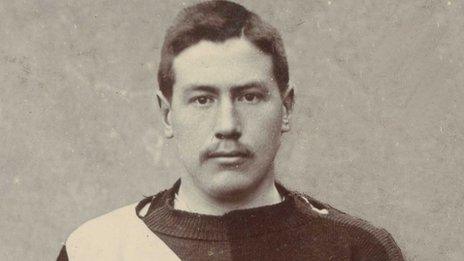RMS Leinster centenary: Ship sunk by U-boat on Irish Sea
- Published
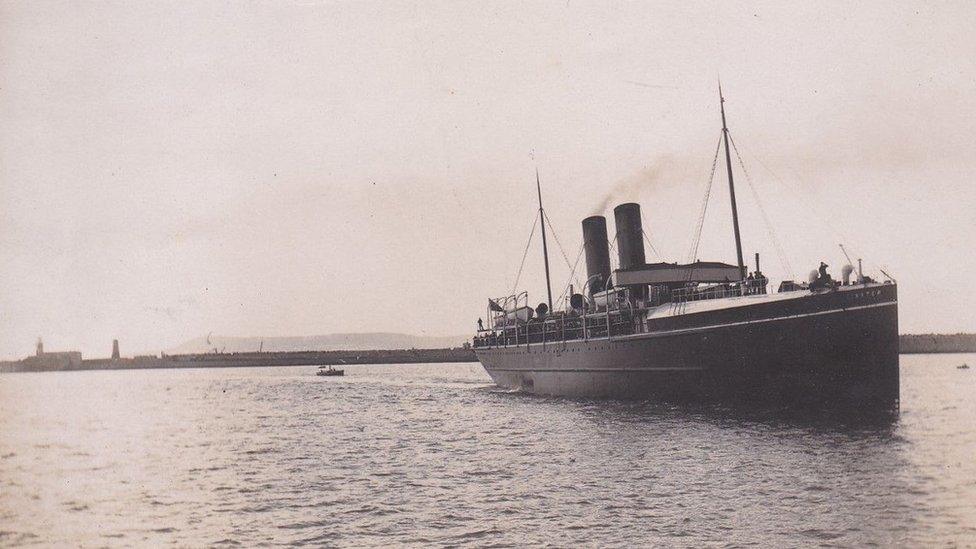
The RMS Leinster went down off Dun Laoghaire
It was the greatest loss of life in the Irish sea when a steamer bound for north Wales was torpedoed by a German U-boat, killing more than 500 people.
Wednesday marks 100 years since the RMS Leinster, which was heading for Holyhead, was sunk 16 miles (25km) off the Irish coast in an attack believed to have lengthened World War One.
Just four days earlier, Germany had approached US president Woodrow Wilson to end the Great War.
But the attack angered the allies.
Wilson had initially been sympathetic to Germany's peace overtures but the sinking of Leinster off Dun Laoghaire caused outrage and led the American premier to demand a harsher price for peace from the Germans.
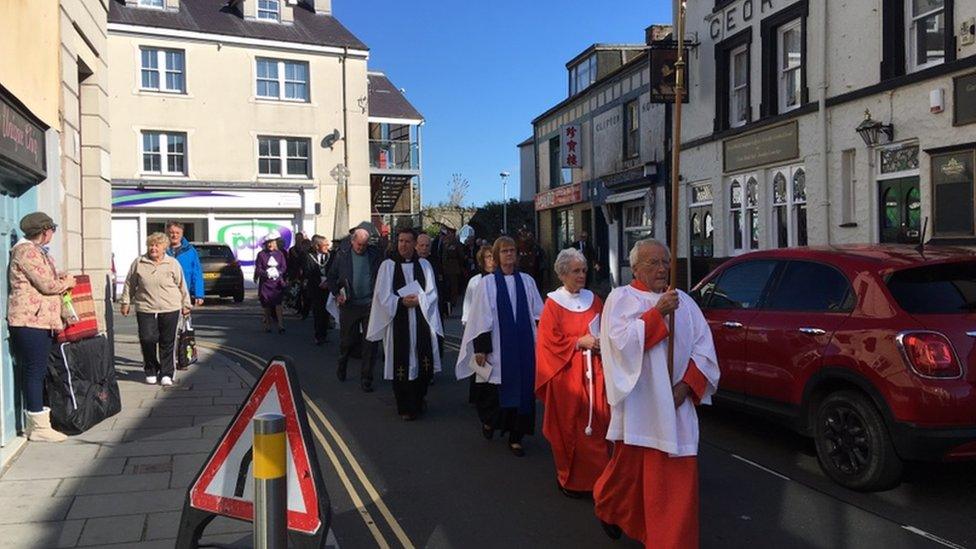
A memorial was held on Wednesday to mark the tragedy

Dr Gareth Huws, Elwyn Hughes from Holyhead Maritime Museum and Captain Tudor Jones - who captained ships from Holyead to Dublin - at the memorial
The majority of the 771 people aboard the vessel, which left Ireland at 09:00 on 10 October 1918, were servicemen returning from leave.
But more than 180 civilian passengers, including US citizens, 76 crew and 20 postal workers were also on board as U-boat UB-123 struck the Leinster, killing 501 people.
There are ceremonies on both sides of the Irish Sea on Wednesday, including a minute silence at the cenotaph in Holyhead.
An initial attack on Leinster's port side killed all the sorters working in her mobile post office, but otherwise caused relatively few casualties.

There was a crew of about 76 on board the RMS Leinster
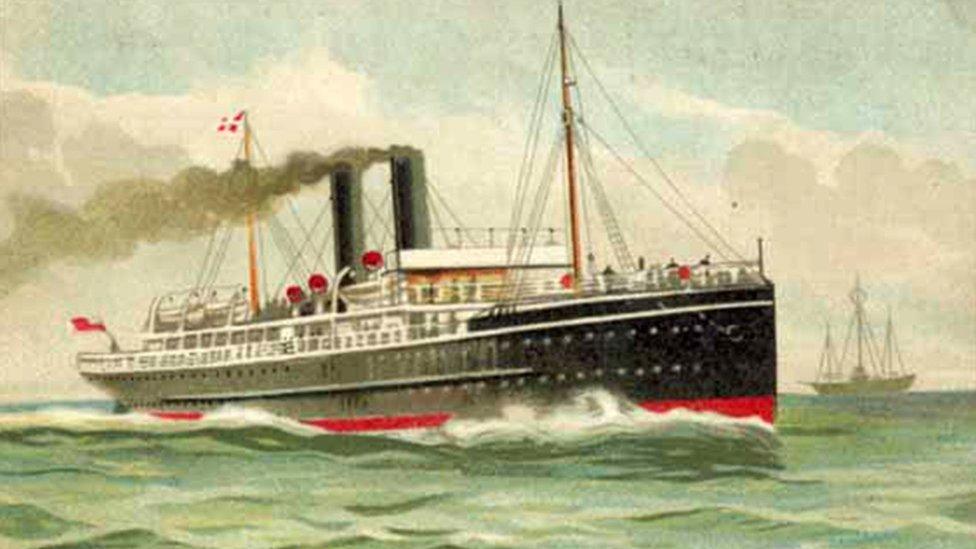
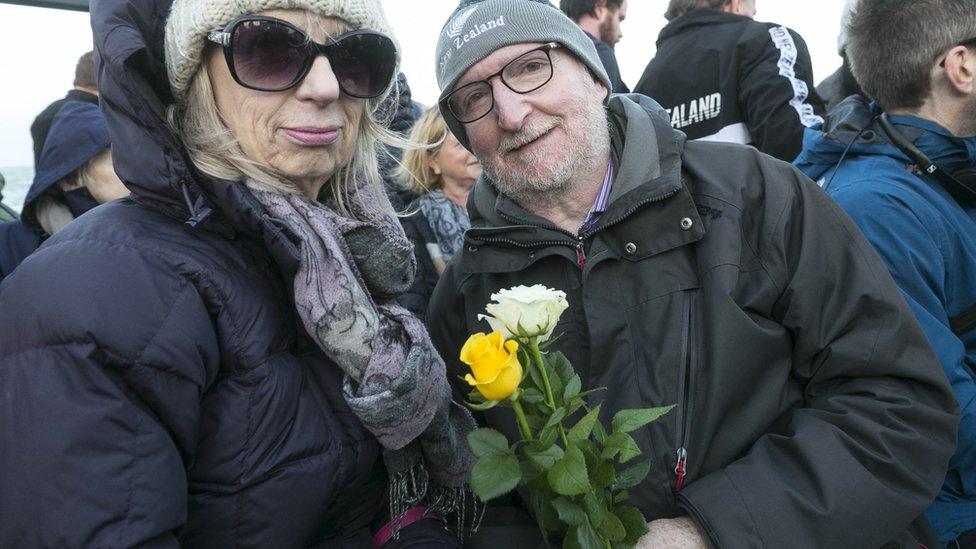
Helen and Damian McCarthy from New Zealand, who had relatives on the RMS Leinster, joined a wreath-laying ceremony off Dun Laoghaire on Wednesday
The steamer was able to turn back towards Dun Laoghaire and deploy her lifeboats, before a second strike on her starboard flank sunk her in minutes, killing two-thirds of those on board.
Dr Gerry Oram, director of Swansea University's War and Society Programme, explained that the callous nature of the attack was indicative of how desperate Germany had become by this stage of the war.
"Following the Battle of Jutland in 1916, the Allies had effectively consigned the German battleship fleet to dock," he said.
"They knew that to take on the Royal Navy head-to-head would be catastrophic.
"With a blockade of German shipping starving to death around 770,000 people, their only means of striking back was to re-launch unrestricted submarine warfare, although that turned out to be a counterproductive policy."
Between March 1917 and the end of the war a month after the Leinster was hit, U-boats sunk 13 million tons of shipping bound for Britain, with the loss of about 5,000 lives.
It was a policy which very nearly paid off, with Britain thought to have less than six weeks' food supplies remaining in April 1917 until Lloyd George ordered the use of the convoy system to protect the merchant fleet.
Dr Oram said the diplomatic consequences would cost Germany dearly.
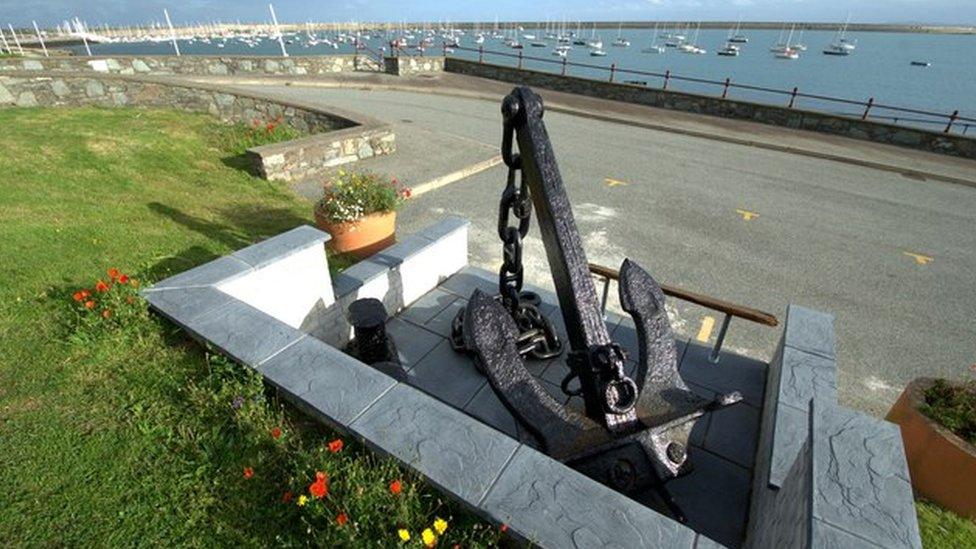
A memorial at Holyhead Maritime Museum commemorating those lost at sea, including the RMS Leinster
"Just as the sinking of The Lusitania in 1915 had been a propaganda disaster for Germany at a time when America was wavering on whether or not to join the war, torpedoing the Leinster was equally disastrous, just at the moment America might have looked sympathetically at an armistice.
"Instead, on 14 October, Wilson rejected the German approach, and demanded a total surrender.
"On 21 October 1918 Reinhard Scheer, admiral of the German High Seas Fleet, ordered that all U-boat attacks should cease while negotiations were ongoing, but by then vital weeks had been lost, and Germany was already in an even poorer bargaining position."
The armistice did eventually come on 11 November 1918, although how many more people had died unnecessarily as a result of the diplomatic blunder can never be calculated.
In a bitter footnote, just eight days after they had sunk Leinster, UB-123 struck a mine in the North Sea while returning to Germany and all 35 crew were killed.
Commemorations to the Leinster and its victims are taking place on both sides of the Irish Sea with a ceremony at Holyhead Cenotaph, external at 12:15 BST on Wednesday.
There was a wreath laying ceremony at the site where the steamer sank on Wednesday morning, organised by the Dublin-based Mail Boat Leinster Centenary Committee, external.
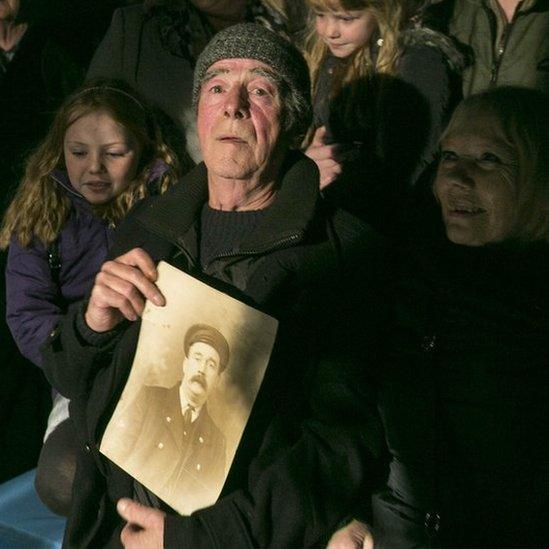
William Byrne, of Dun Laoghaire, grandson of John Donohoe, RMS Leinster's chief stoker, who survived the sinking, joined a wreath-laying ceremony on Wednesday
- Published7 October 2018
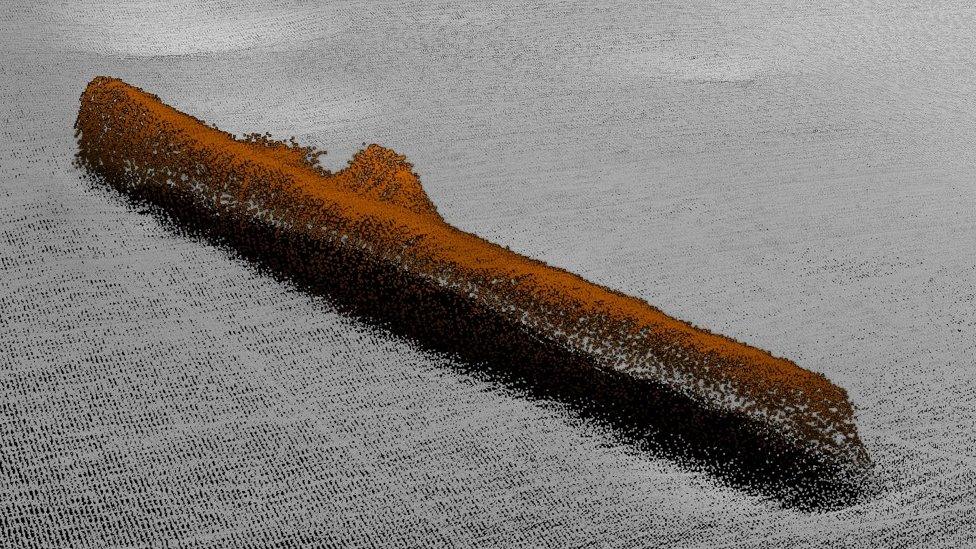
- Published18 July 2018
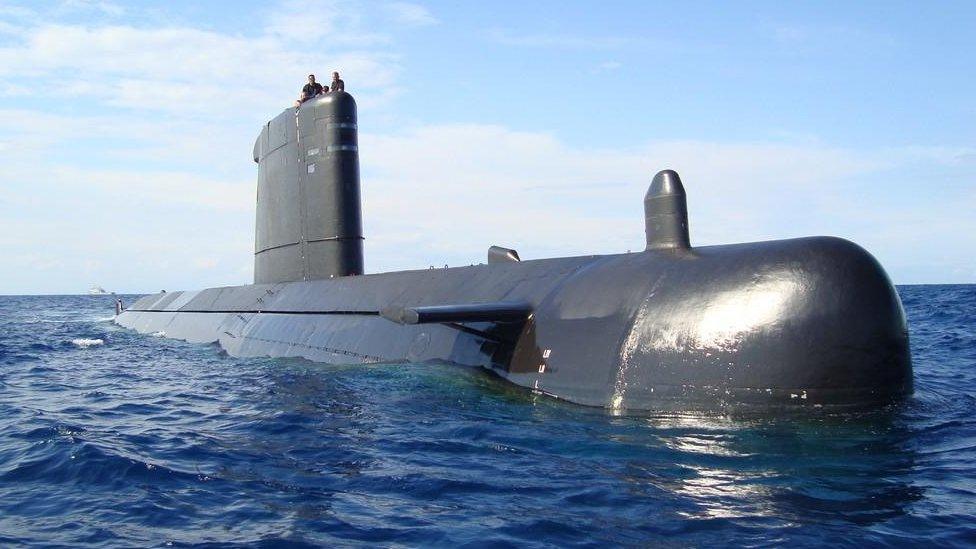
- Published19 July 2018
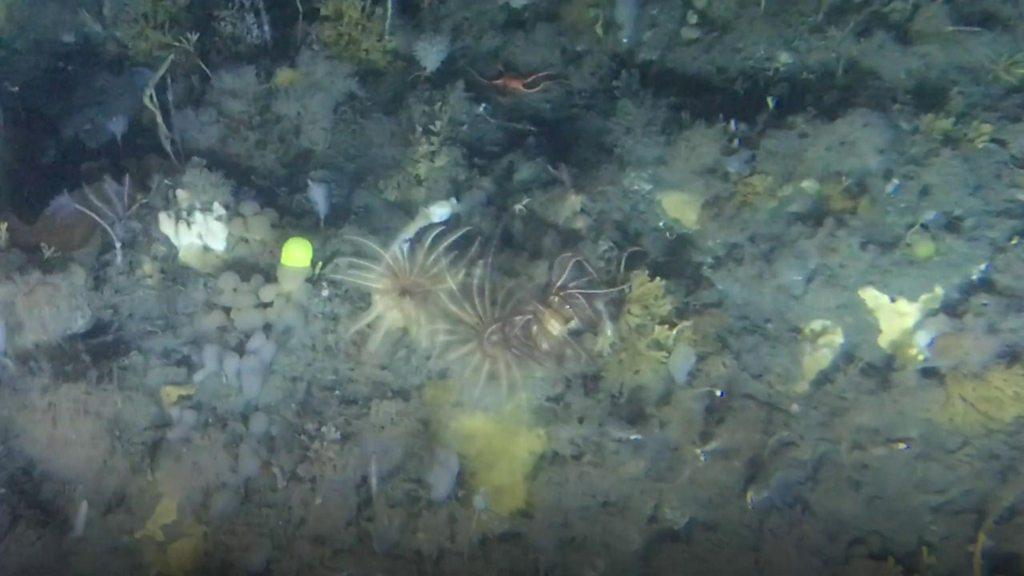
- Published11 April 2018

- Published9 November 2012
